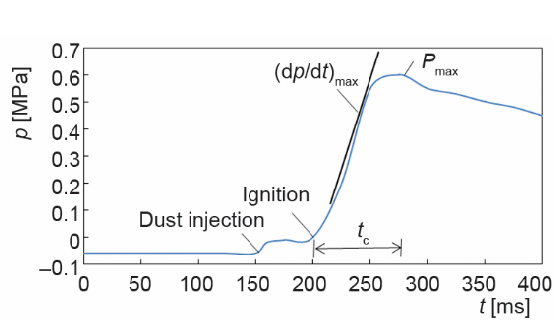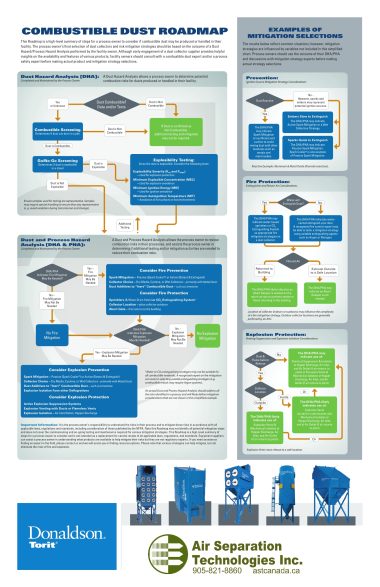
Combustible Dust Testing
Several characteristics of explosive dust can be tested to determine the best way to mitigate fire and explosions in your facility.
Explosive Dust Properties Testing
Terminology
Testing your plant or manufacturing facility for possible hazardous dust or combustible dust will seem perplexing until you understand simple terminology outlined by OSHA, NFPA and other regulating authorities. See the names of the tests, their purpose and definitions below.
Risk Analysis of Combustible Dust
When developing mitigation strategies for potentially hazardous, explosive or combustible dusts, it is important to characterize the hazard risk of the material in question by determining its explosion severity and ignition sensitivity.
Video: Combustible Dust Management
Explosion Severity & Ignition Sensitivity Data
Explosion severity data will determine if an explosion hazard exists and, if so, how energetic it may be while ignition sensitivity data will assess the probability of risk based on how the material responds to heat, spark, impact and frictional forces.
Explosion Severity & Ignition Sensitivity Tests
Air Separation Technologies, Inc. offers the following NFPA Combustible Dust Hazard Assessment (DHA) testing and services for determination of both explosion severity and ignition sensitivity per ASTM and European EN methods:

Explosion Severity Test - (KSt ,PMax and dP/dtMax)
ASTM E1226 – 2010 – Determines values necessary for designing protective measures, such as deflagration venting
EN14034 – Part 1:2004 – Determination of the Maximum Explosion Pressure (Pmax) of Dust Clouds – Part 2:2006 – Determination of the Maximum Rate of Explosion Pressure Rise (dP/dtMax ) of Dust Clouds
Minimum Ignition Energy - (MIE)
ASTM E2019 – Standard Test Method for Minimum Ignition Energy of a Dust Cloud in Air
EN13821:2002 – Potentially Explosive Atmospheres – Explosive Prevention and Protection – Determination of Minimum Ignition Energy of Dust/Air Mixtures
Minimum Explosible Concentration - (MEC)
ASTM E1515 – Identifies the Minimum Hazardous Concentration of a Dust Cloud that will Sustain Combustion
EN14034-3:2006 – Determination of Explosion Characteristics of Dust Clouds – Part 3: Determination of the Lower Explosion Limit (LEL) of Dust Clouds
Minimum Autoignition Temperature of a Dust Cloud - (MIT)
ASTM E1491 – Determines Safe Operating Temperatures at Which a Dust Cloud Will Not Autoignite
EN50281-2-1:1999 – Electrical Apparatus for Use in the Presence of Combustible Dust – Part 2-1: Test Methods – Methods for Determining the Minimum Ignition Temperatures of Dust
Hot Surface Ignition Temperature of Dust Layers - (LIT)
ASTM E2021 – Identifies Dangerous Operating Temperatures at Which a Dust Layer Will Self-Heat
EN50281-2:1999 – Electrical Apparatus for Use in the Presence of Combustible Dust – Part 2-1: Test Methods – Methods for Determining the Minimum Ignition Temperatures of Dust
Limiting Oxygen Concentration - (LOC)
Defines Safe Nitrogen Inerting Levels to Prevent Dust Cloud Explosion
AST Group is Here to Help
The AST Group of Companies offers testing and consulting services to complete a Dust Hazard Analysis through AST Canada and AST Engineering.

AST Canada has been helping clients find solutions for their unique Dust, Mist & Fume Collection needs for more than 40 years.
We can help you too.

